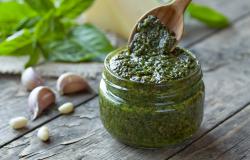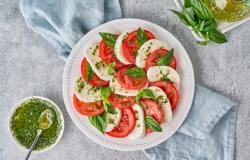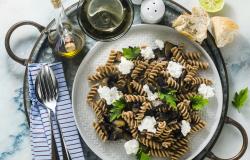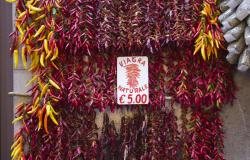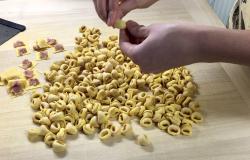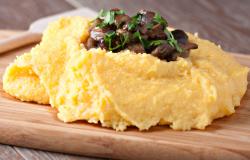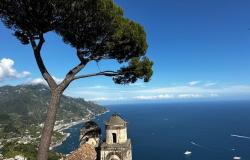The famous tart-sweet liqueur known as limoncello requires only four ingredients: lemon peels, grain alcohol, sugar, and water. However, like many of Italy’s most important culinary traditions, the simplicity of the recipe can be deceiving.
As in making a good risotto, a fine wheel of Parmigiano-Reggiano, or a bottle of traditional balsamic vinegar, good limoncello results from quality ingredients, generations of knowledge, small but critical tweaks in the recipe, and well-kept family secrets passed down over generations.
Today, the lemons of Capri and the Amalfi Coast are considered extra-special. The trees clinging to the cliffsides hang heavy with fruit, sending a heady scent into the air. One of my favorite walks is along the meandering paths of this coastline, lined with lemon trees trained into arbors that provide refuge from the sun.
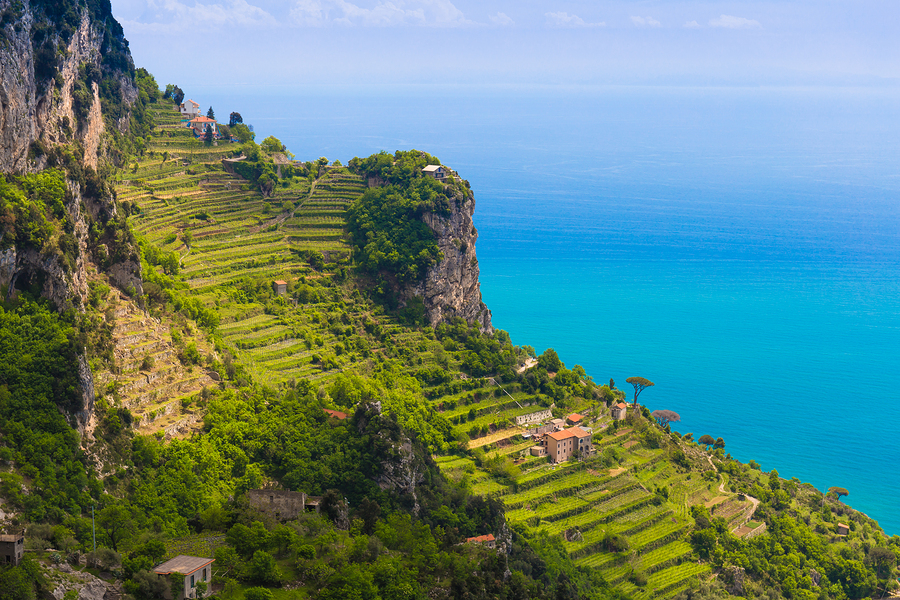
These lemons are the star of not only the region’s famous limoncello, but also an array of pastries sold in the wonderful pasticcerie in the towns. These include lemon tarts; shaved ice or granita made with lemon; delizia, a dome-shaped cake with lemon-flavored whipped cream; and lemon gelato or sorbet. You can find lemon candies and chocolates filled with limoncello cream. You can even buy soap, face cream, lotions, and other potions made from lemon.
Where did limoncello come from?
Roman fresco painters depicted large citrus fruits on the walls of luxurious villas at Pompeii and Herculaneum, and surely lemons must have been cultivated for many centuries before the first documentary evidence of lemons along the Amalfi Coast, dating to the Renaissance.
According to some historians, lemon liqueur was first made behind the walls of convents and monasteries, where excellent-quality beer and wine was already a mainstay, and where strong alcoholic elixirs were commonly concocted in monastic infirmaries for medicinal purposes. In fact, limoncello may have derived from a group of liqueurs called rosoli, sweet alcoholic drinks comprised of fruits, spices, herbs, and medicinal plants.
Beyond the convent walls, making lemon liqueur became a family affair. Residents of the Amalfi Coast probably have been sharing bottles of lemon liqueur among family and friends for centuries. Recipes began appearing in regional cookbooks around 1900.
In 1988, a businessman from Capri named Massimo Canale registered the first trademark with the word “limoncello,” using a recipe handed down from his great-great-grandmother and commercializing the drink outside of the region. It was an idea—and a product—that would prove wildly successful, as limoncello has transcended not only the region but all of Italy to be considered an international and world-class tradition.
Different Lemons, Different Attributes
There are several types of lemons grown along the Amalfi Coast. Most are citrons, or grapefruit-sized lemons. Their peels are thick, their insides pulpy and fragrant. The lemons are prized for their large size, oily peels, and intense lemon flavor, all particularities of the environment of rich volcanic soil, salt air, abundant sunshine, and craggy limestone cliffs in which they are cultivated. Here are the two most famous varieties:
- Ovale di Sorrento: The “Sorrento oval” is shaped like an American football.
- Sfusato Amalfitano: The word sfusato comes from the Italian word for “spindle,” and is a visual reference to this even more elongated, pointed lemon native to Amalfi.
Both types of lemons are regulated by a local limoncello consortium. Officials inspect the cultivation, harvesting, production, and labeling of both types of lemons, seeking to protect and promote these local products and their makers.

How Limoncello is Made
Italy is one of the world’s largest producers of lemons, and the Amalfi Coast stands at the heart of this agricultural industry. Most lemons used in limoncello production are cultivated by training the trees to climb along a framework made of poles about twelve feet high, forming an arbor. The lemons ripen between February and October, then are hand-plucked based on their size, color, and shape.
- The limoncello production process begins with fresh lemon peels, free of the bitter white pith that covers the fruit. Thicker peels are preferred for making lemon liqueur as it’s the oil in the peels that infuses the alcohol with flavor. The pulp—generally unnecessary for making limoncello—is turned into lemon pastries and other lemon-based products.
- Next, the peels are soaked in pure, high-quality alcohol that remains unaltered in the freezer. Different producers use different neutral spirits derived from grain, grapes, sugar beets or sugar cane—even wine or vodka. These spirits have as high as ninety-five percent alcohol content and are ideal as a solvent to extract the oils—and therefore the flavor—from the lemon rinds. For at least forty days, the lemon rinds marinate in the alcohol in a dark place. The longer they steep, the richer the color and the more intensely lemony the taste.
- After the peels macerate for the desired time, the mixture is strained and then combined with a syrup made of sugar dissolved in boiling water. There it stays for another month, covered in a cool, dark place. Finally, the whole mixture is filtered, then bottled and corked.
From lemon to limoncello, approximately eighty days elapse. It’s a relatively simple process but each producer boasts his or her own limoncello secrets. For example, some use only the rinds, while others marinate the pulp and seeds. People experiment with different ratios of sugar to water in the syrup. The location where the limoncello steeps, with varying temperature and relative humidity, can also play a role. Ultimately, these factors affect the flavor as well as the opacity and texture of the final product. One batch of the final product may be bright, neon yellow; another may be more cloudy and opaque as a result of the emulsification of the sugar and lemon oils.
Taste and quality can vary tremendously from producer to producer and from bottle to bottle. Bad limoncello tastes like window cleaner; good limoncello tastes pure and invigorating, like imbibing a ray of sunshine.
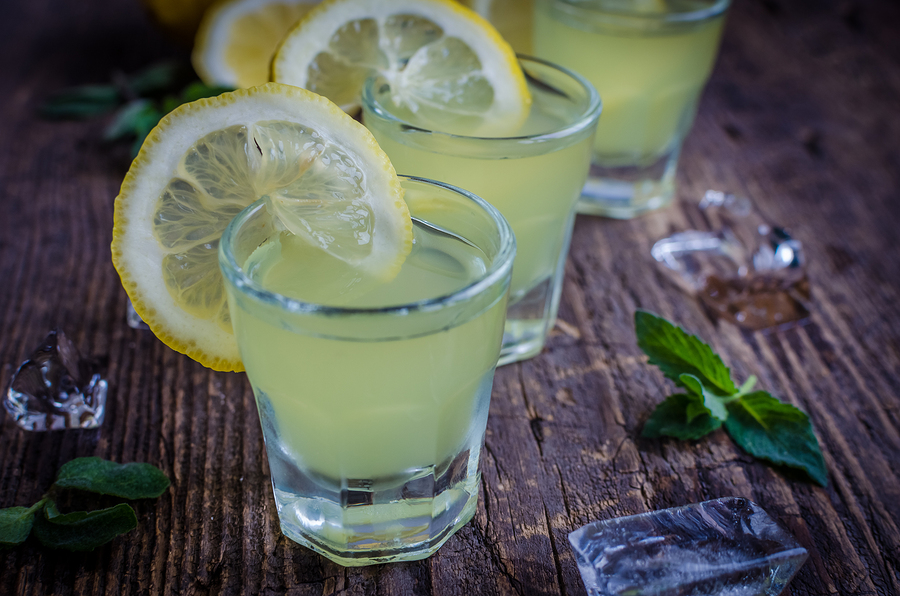
Like this article? Don't miss "Authentic Shopping: Insider Tips to Come Home with an Italian Souvenir You’ll Treasure for Life"
How to Experience Limoncello on the Amalfi Coast
Across southern Italy, restaurateurs serve limoncello after dinner in chilled glasses, frequently offered at no charge. You can also order limoncello at virtually any restaurant or bar in Italy, but visiting the Amalfi Coast offers a wonderful opportunity to appreciate the cultivation of lemons as well as the production of limoncello and other lemon-based products. Here are a few ways to experience it:
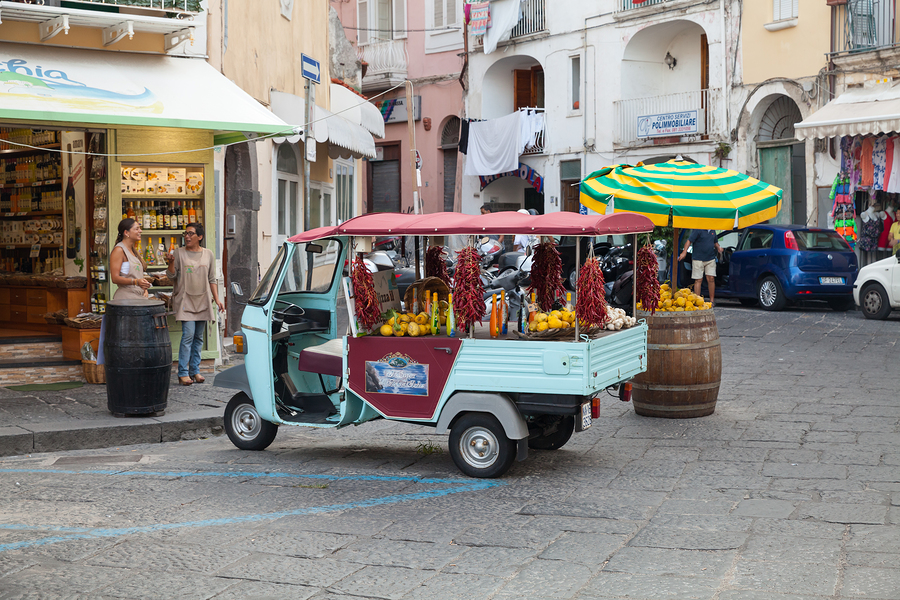
1. Start with the consortia.
In Italy, certain prized agricultural products are strictly regulated. Lemons grown in certain designated regions of Capri and the Sorrentine peninsula fall under the legal protection afforded by an I.G.P. (Indicazione Geografica Protetta), a protected geographic area. Two consortia protect the two main lemons cultivated there based on their cultural, historical, and culinary importance. These certified areas are protected under laws of the European Union.
Consorzio di Tutela Limone Costa d’Amalfi I.G.P.
Corso Regina, 71
Maiori
334/3647427
info@limonecostadamalfiigp.com
This consortium regulates the cultivation of the sfusato amalfitano. Today some 56,000 certified bottles of limoncello with the sfusato amalfitano are produced each year. If you want to know which regional producers of limoncello use the specially designated lemons in their liqueur, check the consortium’s website for a current list.
Consorzio di Tutela del Limone di Sorrento I.G.P.
Via dei Platani, 15
Sorrento
081/5636060
info@limonedisorrentoigp.it
Much like the consortium of Amalfi lemons, this consortium regulates the cultivation of Sorrento lemons. For a current list of regional producers of limoncello using these specially designated lemons in their liqueur, check the consortium’s website.
2. Visit one of the larger producers
On your own or with a group, you can visit some of the lemon groves where the ovale di Sorrento and the sfusato amalfitano are cultivated. Larger, more industrial-scale producers of limoncello are scattered across the region. These producers employ many people and use specialized machinery to peel the lemons, concoct the recipe, and bottle, cork, and label their products. The assembly-line production process is fun to observe.
Liquorificio Carlo Mansi / Limunciel
Via Vescovado, 1
Minori
089/853717
info@carlomansi.com
This historic liquorificio was one of the first to commercialize limoncello and other local alcoholic beverages known as rosoli. The Mansi family invented the Limunciel brand. You can watch the phases of production and sample their limoncelli in their factory.
Terra di Limone/ Lemon Tour de Riso
Via Pioppi
Minori
089/853556
info@terradilimone.it
In 2002, the de Riso family purchased a small artisanal liquorificio and began commercializing its limoncello. The head of the company, Sal de Riso, is a noted pastry chef and now president of the consortium of Amalfi lemons. Today the factory, on the outskirts of Minori in the village of Tufo, is open for tours and sampling and is on the itinerary of many of the tour operators in the area.
Via Gennaro Maresca, 80/D
Piano di Sorrento
081/5322199
info@piemme.info
Piemme is one of the larger producers of limoncello on the Amalfi Coast; it’s owned by a conglomerate that holds hotels in the area. In spite of its large scale, Piemme insists on an artisanal approach to its limoncello production and is active in the consortium of Sorrento lemons. You can arrange for a tour of its facility and watch the fluorescent yellow liqueur be bottled before grabbing some to take home.
3. Look for homemade, artisanal varieties and unique products
Family-based artisanal enterprises, some consisting of several generations, also bottle and sell their own varieties. Many individuals also make homemade versions. Gourmet and gift shops in Naples, Sorrento, Amalfi, and the outlying islands of Procida, Ischia, and Capri are chock-full of limoncello bottles. When you stroll the lanes of the Amalfi Coast, you will see bottles in a variety of shapes, from tall cylinders to squat balloons to those resembling flasks, all boasting the best quality or secret recipe.
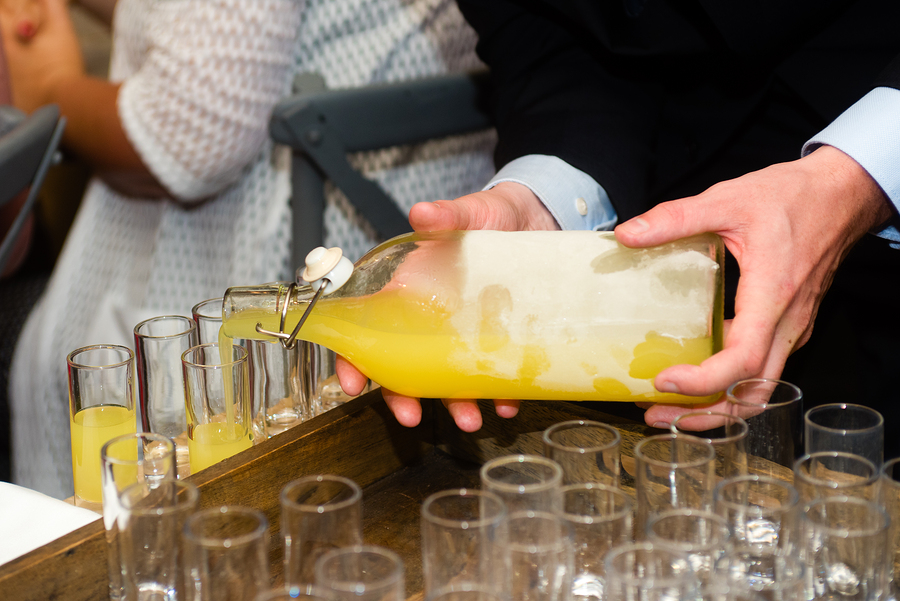
Piazza Duomo, 39
Amalfi
089/872062
info@antichisaporidamalfi.it
In addition to limoncello, the shop also sells honey, marmalade, pastries, and natural cosmetics made with lemons. The shop is impossible to miss with lemon products literally spilling out onto the cobblestones alongside the staircase leading to Amalfi’s cathedral façade.
Cooperativa Cata / La Valle dei Mulini
Via delle Cartiere, 55-57
Amalfi
089/873211
info@amalfilemon.it
For five generations, the Aceto family has been cultivating lemons in the hillsides near the old paper mills of Amalfi. Today the family runs a cooperative based on the cultivation of the sfusato amalfitano lemon and produces a wonderful artisanal limoncello marketed under the brand La Valle dei Mulini.
Piazza Duomo, 40
Amalfi
089/871065
info@pasticceriapansa.it
This fifth-generation pasticceria prides itself on some of the Amalfi Coast’s best homemade torroncini, almond nougat, panettone, and other pastries. Stop by after a meal for a glass of limoncello, or pick up a bottle to take home.
Via Roma, 85
Capri
081/8373059
limoncello@capri.it
Limoncello di Capri is one of the most widely known and distributed limoncelli, and you’ll find it on the shelves of nearly any bar or restaurant in Italy. Today, it is still made using the ovale di Sorrento lemon and its product line includes a plethora of products made with the lemons, including cream, chocolates, panettone bread, gelato, and a personal favorite, babà al limoncello, basically small, soft yeast rolls soaked in limoncello. Hard to go wrong!
Via Liparulo, 12
Massa Lubrense
081/8789380
info@ilconvento.biz
This off-the-beaten-path family agricultural enterprise is centered within the compound of an old convent. On the picturesque grounds, the third generation of the Pollio family cultivates olives, lemons, and fruit trees, lovingly making up homemade products from limoncello to chocolate and other digestivi made with walnuts and fennel.
Via Trinità, 37
Ravello
089/858167
info@profumidellacostiera.it
This liquorificio situated in the picturesque village of Ravello produces homemade limoncello using the sfusato amalfitano lemons. They also make a variety of digestivi made with fennel, coffee, melons, strawberries, and other novel ingredients.
Via Correale, 27
Sorrento
081/8781888
info@igiardinidicataldo.it
This is a privately owned citrus grove near the train station where you can sample the products and buy. The park-like grounds are peaceful and inviting, shaded with lemon-studded arbors and linked together with meandering paths. In addition to limoncello, you can sample a variety of lemon products as well as liqueurs made with fennel, oranges, mandarins, basil, and other creative combinations.
The good news? No matter what type of experience you choose, limoncello is very affordable. You can do your own taste-testing at any producer or just about any bar or shop selling limoncello in the area. Inside many bars and pasticcerie you’ll be offered a sample of the house-made variety. With the variety and wide availability of good-quality, well-made limoncello, you’ll have plenty of options.
Beyond the Digestivo
- While limoncello is most commonly enjoyed as an after-dinner drink, you can also:
- Drizzle it over gelato or fresh fruit
- Swirl it into champagne or sparking water
- Stir it into pastry cream or drizzle it over pound cake
- Impart a lemony sweet flavor to homemade cocktails
- Spike your lemonade!
Laura Morelli is an art historian and historical novelist with a passion for Italy. You can find much more about what to bring home from Italy in her guidebook series, including Made in Naples & the Amalfi Coast and Made in Italy. These books, along with Laura’s Venice-inspired historical novels, including The Gondola Maker, are available in the Italy Magazine shop.

